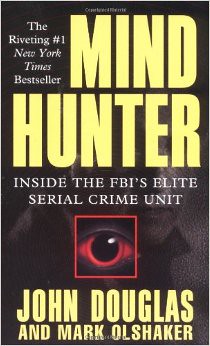How Debugging is Like Hunting Serial Killers

Warning: A quote I use in this article is quite graphic. That's the power of the writing, but if you are at all squirmy you may want to turn back now.
Debugging requires a particular sympathy for the machine. You must be able to run the machine and networks of machines in your mind while simulating what-ifs based on mere wisps of insight.
There's another process that is surprisingly similar to debugging: hunting down serial killers.
I ran across this parallel while reading Mindhunter: Inside the FBI's Elite Serial Crime Unit by John E. Douglas, a FBI profiler whose specialty is the dark debugging of twisted human minds.
Here's how John describes profiling:
You have to be able to re-create the crime scene in your head. You need to know as much as you can about the victim so that you can imagine how she might have reacted. You have to be able to put yourself in her place as the attacker threatens her with a gun or a knife, a rock, his fists, or whatever. You have to be able to feel her fear as he approaches her. You have to be able to feel her pain as he rapes her or beats her or cuts her. You have to try to imagine what she was going through when he tortured her for his sexual gratification. You have to understand what it’s like to scream in terror and agony, realizing that it won’t help, that it won’t get him to stop. You have to know what it was like. And that is a heavy burden to have to carry.
Serial killers are like bugs in the societal machine. They hide. They blend in. They can pass for "normal" which makes them tough to find. They attack weakness causing untold damage until caught. And they will keep causing damage until caught. They are always hunting for opportunity.
After reading the book I'm quite grateful that the only bugs I've had to deal with are of the computer variety. The human bugs are very very scary.
Here are some other quotes from the book you may also appreciate:
Like Sherlock Holmes, I had quickly come to realize that the more ordinary and routine the crime, the less behavioral evidence there was to work with. I couldn’t be much help on street holdups. They’re too common, the behavior is too mundane, and therefore the suspect pool is enormous.
I’ve always found that the late-night or early-morning hours are often the best time to conduct an interrogation.
But what my colleagues and I have found and have tried desperately to get across to others in the business of correction and forensic psychology is that dangerousness is situational. If you can keep someone in a well-ordered environment where he doesn’t have choices to make, he may be fine.
This degree of control and orchestration was what really turned him on and gave him his biggest thrill.
What took place? This includes everything that might be behaviorally significant about the crime. Why did it happen the way it did? Why, for example, was there mutilation after death? Why was nothing of value taken? Why was there no forced entry? What are the reasons for every behaviorally significant factor in the crime?




